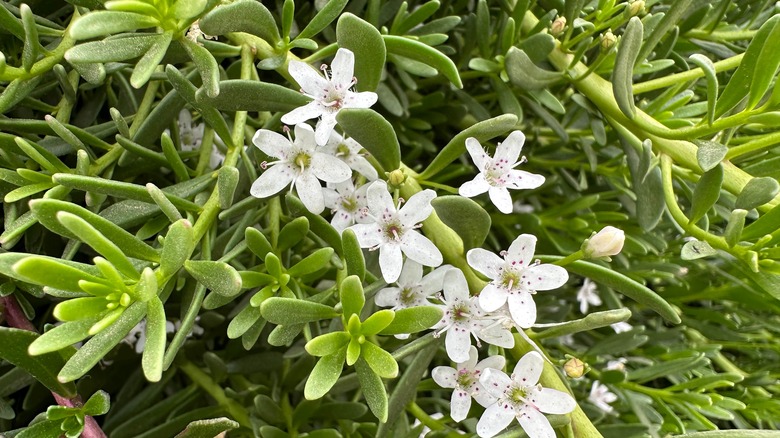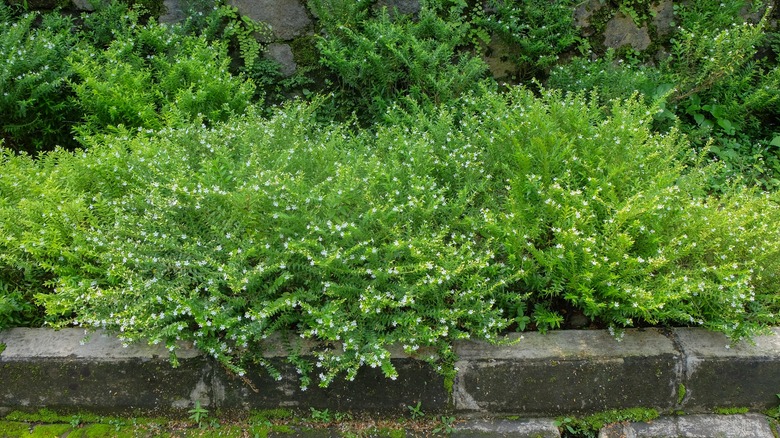Myoporum Ground Covers: Are They A Garden Savior Or A Disaster To Avoid?
If you've been searching for a great looking ground cover that grows in full sun or part shade while supporting bees, Myoporums might be on your radar — and for good reason. These species are quite hardy, will grow quickly, and can spread more than 6 feet in every direction. In fact, they could easily be added to a long list of ground cover plants you could grow instead of grass in your yard. But, if this group of plants has piqued your interest, you need to select the right variety to avoid a disaster in your garden. Specifically, Myoporum parvifolium, or prostrate Myoporum, is the species you want to consider because, to date, this variety has not fallen victim to the dreaded Myoporum thrips. These invasive little pests, originating from New Zealand, have caused a lot of damage to other Myoporum species such as M. pacificum and M. laetum.
You could regard prostrate Myoporum as a garden savior as long as you follow some important guidelines when growing it. Don't worry though, this species is not difficult to grow and will make a useful ground cover to suppress weeds and add additional texture to your yard. It's particularly good for desert gardens and to grow on banks or slopes to help prevent erosion. If you live in USDA hardiness zones 9 through 11 where temperatures don't drop below 23 degrees Fahrenheit, this plant can be an excellent addition to your yard.
Tips for growing Myoporum parvifolium in your garden
Before planting your prostrate Myoporum, you'll want to ensure that the soil drains well for healthy root growth. Once your plant has established itself, it can be relatively drought-tolerant, but it will appreciate some additional water in hot areas with limited rainfall. And this is where it gets a bit tricky because you have to find a good balance between ample watering and excessive moisture. You see, if you give this plant too much water, it will put on lots of growth but it will be quite weak. But, if you follow the 3-second rule, this should take the guesswork out of watering your plants.
Most of the time, fully drenching the soil directly around the center of the plant and its primary root system –maybe once a week during dry conditions — should be fine. You'll find that if you direct the water to the middle of the plant, the spread won't get out of control, as the roots will grow to where there's moisture in the soil. To keep them more compact, you can also give your ground covers a general prune early in spring before the masses of tiny white flowers appear. Just keep in mind that if you want to grow this plant as a lawn alternative, it won't handle foot traffic as the fleshy stems can be brittle. In that situation, you might be better off with a substitute, like Kurapia, which has many benefits as a heat-tolerant ground cover, to replace a lawn.

